Content
Wilhelm Maybach
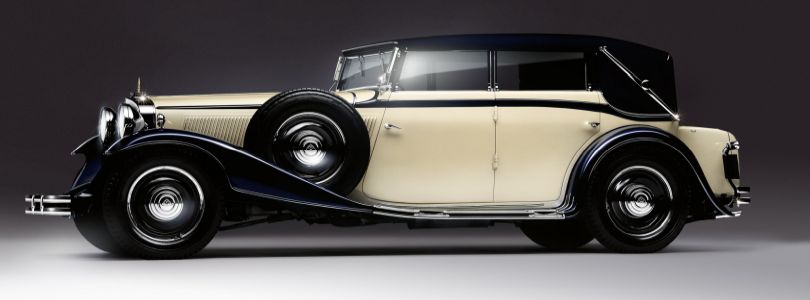
Maybach Zeppelin DS8
The father of the modern automobile
Everyone knows the pioneers Gottlieb Daimler and Carl Benz, but the name of perhaps the most important engineer of the early phase of the automobile is far less familiar: Wilhelm Maybach. He was Gottlieb Daimler's closest colleague and one of the founding fathers of the company that bears his name today. Probably no one contributed so much to the technical development from motorised horse-carriages to the first real automobiles.
The ingenious engine builder was born on 9 February 1846, in Heilbronn. The orphanage in Reutlingen, where he lived from the age of ten, cooperated with a machine shop where his technical talent could develop.
Meeting Daimler

Wilhelm Maybach (around 1900)
In 1867, an encounter took place in this "Bruderhaus" that was to write technical history: Gottlieb Daimler, who had last worked abroad as a technician, took over the inspection of the workshop and met Maybach, who was twelve years younger. From then on, the two formed a congenial team that complemented each other perfectly: Daimler as a technical visionary and businessman, Maybach as an ingenious designer. It was not until Daimler's death that their decades-long collaboration came to an end.
Maybach implemented Daimler's ideas technically; Daimler registered the patents for them - initially (only) under his name - and consistently enforced them. Carl Benz, for example, is forced to pay licence fees, the competitor who cannot yet foresee that his name will later always be mentioned in the same breath as Daimler.
Ingenuity from the garden shed
One of Daimler and Maybach's first joint professional stations is the Deutz gas engine factory, where Nikolaus Otto has just developed the engine named after him. The two of them made this four-stroke gas engine ready for the market - and the company big.
When Daimler left Deutz in a dispute after successful years and moved to Cannstatt, Maybach followed him. The two set up a workshop in a converted greenhouse in the garden of Daimler's villa. Here they developed a light, high-revving internal combustion engine. Maybach's glow-tube ignition ("gas engine", ![]() DE28022A) is particularly significant.
DE28022A) is particularly significant.
Its further development, the famous "grandfather clock", is a real milestone in 1884: the engine is comparatively light and small, but at the same time powerful and fast-running enough to power vehicles ( ![]() DE34926A,"Gas- bzw. Petroleum-Kraftmaschine").
DE34926A,"Gas- bzw. Petroleum-Kraftmaschine").
The first motorbike
The first thing Maybach was to build the new engine into was a kind of wooden bicycle with supporting wheels. The so-called „Reitwagen“ ("riding carriage"), with which Maybach makes his rounds around the greenhouse in 1885, is the world's first motorbike. The two-wheeled vehicle could travel up to 12 kilometres per hour and, according to the patent specification, could also be fitted with a skid and spikes, making it the first snowmobile ( ![]() DE36423A). In that very summer 145 years ago, Bertha Benz undertook the legendary first major car journey in history with the vehicle constructed by her husband Carl (
DE36423A). In that very summer 145 years ago, Bertha Benz undertook the legendary first major car journey in history with the vehicle constructed by her husband Carl ( ![]() DE37435A)
DE37435A)
Daimler and Maybach also test their engine in a boat and then in a horse-drawn carriage in 1886. Maybach further develops this motor carriage with many new solutions into the "motor quadricycle". This "steel-wheeled carriage" of 1889 has a four-speed gearbox - a novelty that is marvelled at at the World Exhibition in Paris, as is the two-cylinder V-engine.
Maybach was one of the first to not simply install an engine in an existing vehicle, but to develop an organic vehicle around the engine.
The early years of automobile manufacturing are marked by patent disputes, competition and intrigue. Daimler founded the Daimler-Motoren-Gesellschaft (DMG) in 1890. Maybach became chief designer, but had to quit after just one year. He continued to design independently, first in his flat, then in a disused hotel. Daimler, who had to leave his own company in the meantime, financed him. In 1895 they both returned to DMG.
On the way to the first real automobile
Maybach progressed unflinchingly on the road to the modern automobile, solving one technical problem after another (e.g. ![]() DE68492A,
DE68492A, ![]() DE70260A,
DE70260A, ![]() DE70577A)..For example, the "honeycomb" radiator ensures that the engine does no overheat. Finally, a vehicle is created that defines all the basic characteristics of the modern automobile: powerful engine (35 hp!), light-alloy body, steel frame with a low centre of gravity, wheels of equal size, inclined steering, gear shift and transmission. It is a racing car with a four-cylinder engine and two carburettors.
DE70577A)..For example, the "honeycomb" radiator ensures that the engine does no overheat. Finally, a vehicle is created that defines all the basic characteristics of the modern automobile: powerful engine (35 hp!), light-alloy body, steel frame with a low centre of gravity, wheels of equal size, inclined steering, gear shift and transmission. It is a racing car with a four-cylinder engine and two carburettors.
The client, a sales partner and "brand ambassador" (as they would say today), the Austrian consul in France, Emil Jellinek, names the car after his daughter: Mercedes.
King of the constructors
A further development of this car, the "Mercedes Simplex", gives DMG its first major racing victory in 1903. Maybach is at the peak of his career and is celebrated at the Paris Motor Show as the "King of the Constructors".
But since Daimler's death in 1900, Maybach's position in the company has become increasingly weaker. Although influential partners like Jellinek praise him as the "greatest living designer of petrol engines" - the board of directors wants to get rid of him. Increasingly frustrated he finally leaves DMG in 1907.
A new start with zeppelins
Together with his son Karl, who had been working closely with him for years, he founded the "Luftfahrzeug-Motorenbau GmbH" in Bissingen in 1909 to power zeppelins. Wilhelm gradually withdraws to an advisory role and leaves the technical management to Karl. However, he continues to apply for patents, for example ![]() DE253139A,
DE253139A, ![]() DE263121A oder
DE263121A oder ![]() DE221146A.
DE221146A.
After the First World War, the construction of flying machines is prohibited in Germany by the Treaty of Versailles. The company is renamed Maybach-Motorenbau GmbH. The Maybachs now build engines for the railways in Friedrichshafen (such as for the high-speed train "Fliegender Hamburger"), but also begin to develop their own automobiles.
100 years ago: The first Maybach
One hundred years ago, at the 1921 Berlin Motor Show, they present their first car, the Maybach W 3. A 70 hp six-cylinder in-line engine accelerates the car up to 110 kilometres per hour. It establishes the company's brief heyday as a luxury car manufacturer: Maybach plays in a league with Rolls-Royce, Bentley, Bugatti and the top models from Daimler-Benz (as their ex-employer has been called since 1926); the cars are among the best and most expensive on the market.
In Friedrichshafen, Maybach-Motorenbau only manufactures the drive and chassis; they leave the bodywork (as was quite common at the time) to specialist firms such as Hermann Spohn in Ravensburg, who take individual customer wishes into account. Probably the most famous Maybach is the luxurious "Zeppelin" with its twelve-cylinder engine. Only about 200 items were built.
In total, around 1800 vehicles are produced at Maybach until 1941. From then on, the company has to built engines for tanks. Wilhelm Maybach, who dies in Stuttgart on 29 December 1929, passes away in time before he has to see his son Adolf, Karl's younger brother, being murdered during the Nazi "euthanasia" programme in 1940.
Late honour
After 1945, Maybach-Motorenbau builds large engines again, but car production is not resumed. In 1960 Daimler-Benz takes over the company; in 1969 it is merged into MTU Friedrichshafen.
On his 150th birthday, Wilhelm Maybach is inducted into the "Automotive Hall of Fame" in Detroit - a late honour for the almost forgotten „king of engineers“ of the turn of the century. A few years later, Mercedes-Benz revived the Maybach brand (including 994569) and sold its most luxurious vehicles under this name for a while. Since 2014, Damiler´s most expensive cars have been called "Mercedes-Maybach".
Text: Dr. Jan Björn Potthast; Pictures: Daimler AG, unknown / via Wikimedia Commons, DEPATISnet, Deutsches Museum München, DPMAregister
Last updated: 16 April 2025

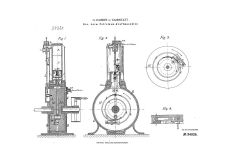
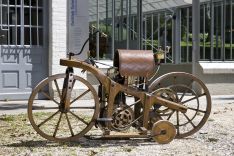
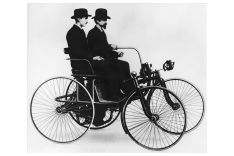
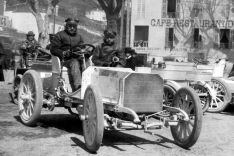
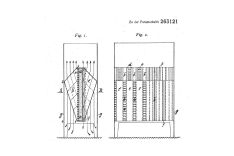
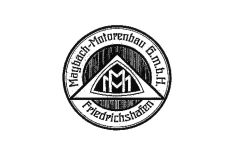
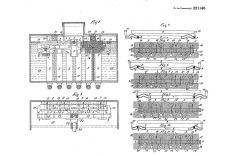
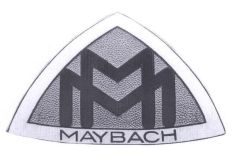
Not only protecting innovations
Social Media